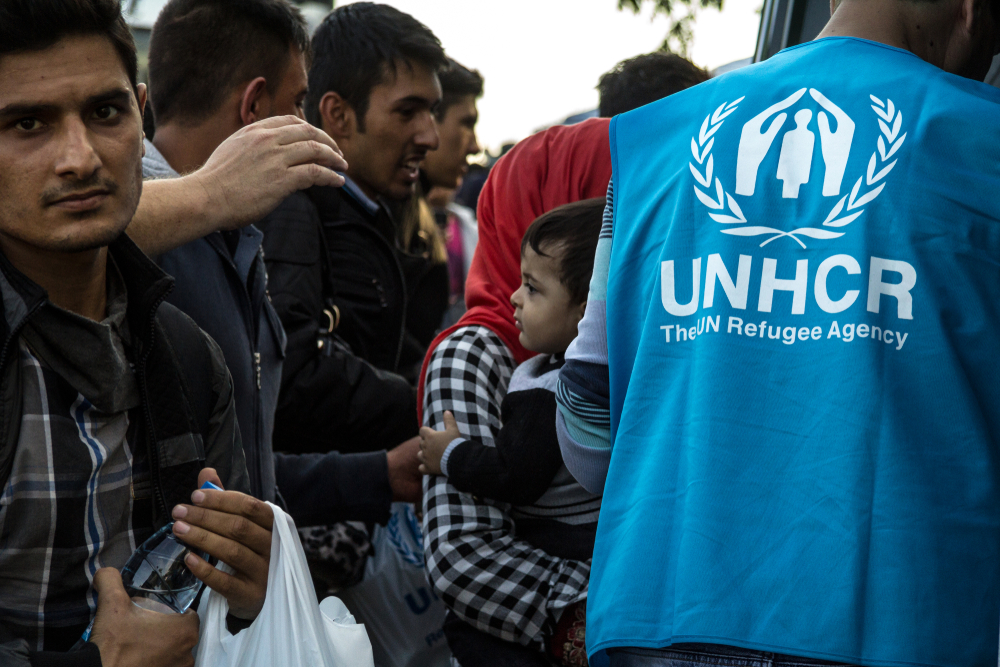UNHCR new Refugee Zakat Fund aims to reach the most vulnerable with tech and transparency
DUBAI - The United Nations refugee agency’s Refugee Zakat Fund is leveraging technology and its legacy as an organisation of longstanding repute for refugee aid to ensure that 100 per cent of zakat donations go to the people who are most in need, a key concern amongst donors worldwide.
The Refugee Zakat Fund is a new structure that has transformed the UNHCR’s existing zakat programme into a global fund aimed at aiding the most vulnerable displaced populations while meeting the needs of Islamic institutions and individuals in fulfilling their social responsibility. It is a dedicated non-interest-bearing account in Switzerland, Houssam Chahin, UNHCR’s head of private sector partnerships in the MENA region, told Salaam Gateway on Thursday.
UNHCR projects that $208.6 million in zakat-eligible funds will be required to assist the most vulnerable refugee and internally displaced families across several member countries of the Organisation of Islamic Cooperation (OIC). It is confident the new fund can raise $26 million in 2019, an ambitious target considering its zakat programme globally received $14.4 million from 2016 to 2018.
“We are talking to many Islamic banks and zakat collection agencies to channel their zakat funds, including employee and company zakats, to the new fund,” said Chahin.
“We have lined up many promotional digital campaigns to create awareness and convince donors worldwide that their zakat will go 100 per cent to beneficiaries,” he added.
The number of Islamic banks and institutions UNHCR has tied up with was not disclosed at the time of reporting.
Large donations and smaller, digital donations amounting $11.4 million and $3 million, respectively, constituted the $14.4 million in zakat funds raised from 2016 to 2018. These funds assisted 6,888 displaced families, mainly Syrian refugees, in Jordan and Lebanon.
A new report from UNHCR released Thursday said actual current global zakat giving is $76 billion, “far below” the potential of $356 billion. 10 per cent of the current global zakat giving could fully address UNHCR’s 2019 budget, it said.
The zakat industry, according to UNHCR, "has the potential to play a much greater role to transform the lives of 68.5 million refugees and other displaced persons around the world, of which 40.8 million are Muslim".
TRANSPARENCY
Maya Marissa Malek, CEO of Amanie Advisors Global Office, a Shariah advisory, said UNHCR can play a big role in resolving the main concern among contributors: ensuring that zakat reaches the intended recipients.
“The agent between donors and recipients should be trustworthy,” said Malek.
“There should be an audit trail as well as a reporting platform to [assure] donors that their money goes to the intended recipients [and to provide] aligned impact assessment and evaluation projects.”
Chahin confirmed the UNHCR will develop an elaborate reporting structure to update donors regarding their zakat.
“A donor will receive reports every quarter with details of where the money is going and how it has impacted families, especially women and children,” said Chahin.
“There will be a global report every year taking into account the impact assessment and evaluation of the project,” he added.
The UNHCR’s zakat distribution is directed to those who have been vetted and designated as most in need of assistance.
The money from the zakat fund is earmarked and dedicated to its cash assistance programmes in Jordan, Lebanon, Iraq, Yemen, Egypt and Mauritania.
The refugee agency will also undertake post-distribution monitoring that assesses the effectiveness of its cash assistance programme.
“We will be conducting surveys on what the recipients have spent the money on,” said Chahin.
“In previous instances, we have found that most of them have used it for food, education, clearing debts, etc. Our reports to donors will include this information as well.”
|
How does the UNHCR distribute zakat to those most in need? Shadi Ghrawi, the UNHCR’s private sector partnerships officer, explained the process by which zakat is distributed to recipients: - At the UNHCR online zakat portal, donors select the country that their zakat will be directed to. - The UNHCR then allocates the funds to the neediest among the vulnerable families in that country. - The distribution mechanism varies from country to country based on available infrastructure. For example, in Jordan, UNHCR partners with Cairo Amman, a bank with branches in Jordan and Palestine, to allow beneficiaries to withdraw their aid funds from ATMs equipped with iris scanning. This allows them to access funds without a bank account or PIN. In Jordan, the amount of cash assistance provided is based on the Survival Minimum Expenditure Basket. It is an estimate of the monthly expenditure per capita necessary for physical survival. “When we register refugees across the world, we take their iris scan irrespective of whether they will be recipients of zakat or not,” said Ghrawi. Once the refugees are enrolled, they receive a text message notifying them when they may expect to collect the money. “We exchange the data in the cloud with the bank, and this is where the matching happens: when the beneficiary is enrolled in the cash programme and goes to get the money out.” |
(Reporting by Seban Scaria, Editing by Emmy Abdul Alim emmy.alim@refinitiv.com)
© SalaamGateway.com 2019 All Rights Reserved

Seban Scaria